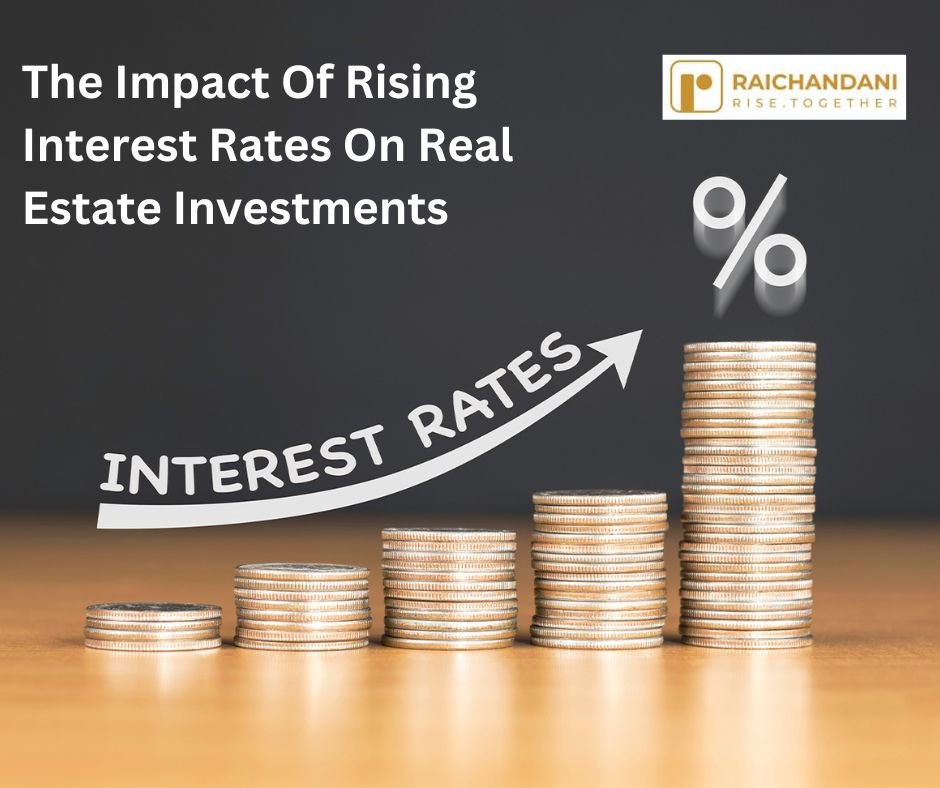Introduction
Understanding Interest Rates in Real Estate Markets
Interest rates play a pivotal role in shaping the dynamics of real estate markets. They define the cost of borrowing money, which in turn influences buyers’ willingness and ability to invest in properties. When interest rates are low, purchasing a home becomes more affordable, enabling more potential homeowners to enter the market. Conversely, high interest rates make borrowing more expensive, which can suppress demand and lead to stagnation or decline in property prices.
For instance, during the post-2008 financial crisis, interest rates dropped significantly to stimulate the economy. This shift helped first-time buyers and investors seize opportunities, boosting real estate activity during that period. Observing these trends helps stakeholders make informed decisions.
Significance of Interest Rates Analysis
Analyzing interest rates is crucial for anyone involved in the real estate market. Understanding how these rates fluctuate allows investors, buyers, and sellers to anticipate market movements and plan accordingly. Here are a few key reasons why interest rate analysis is significant:
- Investment Timing: Identifying favorable interest rate environments can signal the best times to buy or sell properties.
- Budgeting Insights: For potential buyers, knowing current mortgage rates can assist in budgeting for home purchases, ensuring they select properties that align with their financial capabilities.
- Market Sentiment: Interest rate trends often reflect the broader economic sentiment, which can indicate future market conditions.
In the ever-evolving landscape of real estate, grasping the nuances of interest rates is not just an academic exercise; it’s a fundamental skill for successful navigation and risk management. Through astute analysis, investors can spot opportunities and avoid pitfalls, ultimately making more strategic choices in an unpredictable market.

Impact of Interest Rates on Real Estate Markets
Effect on Property Prices
Interest rates have a profound effect on property prices, shaping the affordability of homes and the overall market landscape. When rates are low, it minimizes the cost of borrowing, enabling more buyers to enter the market. For instance, during periods of low interest, buyers may find themselves competing for homes, which can drive prices upwards. On the other hand, if rates rise, the reverse often occurs—fewer buyers can afford homes, leading to decreased demand and potentially falling property prices.
Example: Imagine a charming neighborhood undergoing revitalization. If the current interest rate is around 3%, more families might be drawn to purchase in that area. However, if the interest rate were to jump to 6%, many of those potential buyers might pull back, leading to a slowdown in property appreciation.
Influence on Mortgage Rates
The relationship between general interest rates and mortgage rates is direct and significant. As interest rates rise, mortgage lenders typically increase their rates as well, making it more costly for buyers to finance their homes. Conversely, when interest rates decrease, mortgage rates generally follow suit, making borrowing more attractive.
- Fixed vs. Variable Mortgages:
- Fixed-rate mortgages might provide stability in times of fluctuating interest rates.
- Variable-rate mortgages can lead to unexpected increases in monthly payments if rates rise.
Relationship with Housing Demand
Finally, the interplay between interest rates and housing demand is a critical factor in real estate markets. Low interest rates tend to stimulate demand, as buyers feel more empowered to secure a mortgage and invest in properties. Conversely, when rates rise, many potential buyers may decide to postpone or reconsider their purchases, dampening overall market activity.
For example, during the economic recovery following the COVID-19 pandemic, slashed interest rates encouraged a surge in home buying. This resulted in bidding wars and a significant increase in housing demand—illustrating how responsive the market can be to interest rate changes.
Understanding these dynamics allows market participants to make informed decisions, whether they are buyers, sellers, or investors navigating the complex world of real estate.

Factors Influencing Interest Rates
Federal Reserve Policy
One of the most significant factors influencing interest rates is the policy set forth by the Federal Reserve. As the central bank of the United States, the Federal Reserve implements monetary policy to help stabilize the economy. When economic growth is slow, the Fed may lower interest rates to encourage borrowing and spending. Conversely, if inflation is a concern, it may raise rates to cool down an overheated economy.
Example: During the financial crisis of 2008, the Federal Reserve slashed rates to near-zero levels, fostering an environment that allowed the real estate market to recover. Buyers took advantage of these historically low rates, fueling a renaissance in property sales.
Economic Indicators
Numerous economic indicators play a crucial role in shaping interest rates. Metrics like GDP growth, unemployment rates, and inflation levels can paint a picture of economic health. As the economy improves, inflation often rises, prompting the Fed to increase interest rates to maintain stability.
Key indicators to watch include:
- Inflation Rate: Higher inflation can lead to increased interest rates as lenders seek to maintain their purchasing power.
- Job Growth: Strong job creation can signal economic strength, potentially leading to higher interest rates.
- Consumer Confidence Index: When consumer confidence is high, spending rises, which might put upward pressure on interest rates.
Market Conditions
Finally, market conditions, such as supply and demand for credit, impact interest rates as well. In a robust market with high demand for loans, lenders may raise rates due to increased competition for limited capital. On the flip side, during economic downturns, lenders may lower rates to attract borrowers, reflecting a shift in market sentiment.
Tip: Keeping an eye on these factors can help real estate investors anticipate changes in interest rates and make strategic decisions. By understanding the forces at play, stakeholders can position themselves to take advantage of market shifts, ensuring they capitalize on opportunities as they arise.

Market Trends and Scenarios
Rising Interest Rates: Effects and Strategies
As the interest rates begin to rise, the real estate market responds in several ways. One of the most immediate effects is a slowdown in housing demand. Potential buyers may be deterred by higher mortgage costs, leading to fewer transactions and potentially stabilizing or even decreasing property prices.
Example: In 2018, interest rates began to creep up, resulting in a noticeable decline in home sales. Buyers who could once afford a median-priced home found themselves priced out of the market. In such environments, savvy investors should consider the following strategies:
- Negotiate Deals: With fewer buyers in the market, there may be opportunities to negotiate better terms on home purchases.
- Explore Alternative Financing: Consider loans with fixed rates or adjustable-rate mortgages that can offer better terms initially.
- Focus on Rental Properties: In a climate where fewer people are buying, rental properties may see an uptick in demand, becoming a viable investment strategy.
Falling Interest Rates: Opportunities and Risks
Conversely, when interest rates fall, the real estate market often experiences a surge in activity. Lower borrowing costs can encourage first-time buyers and seasoned investors alike to enter the market, driving up demand and property values.
However, while falling interest rates present numerous opportunities, they also carry risks.
Key Considerations:
- Increased Competition: As more buyers enter the market, bidding wars can arise, driving prices above their true value.
- Potential Overvaluation: Rapid price increases may lead to a bubble, where property values are inflated beyond sustainable levels.
Actionable Insights:
- Take Advantage of Refinancing: Homeowners should consider refinancing their existing loans to lock in lower rates, reducing their monthly payments.
- Invest in Growth Areas: Identify neighborhoods poised for appreciation and invest before prices spike too high.
By keeping an eye on interest rate trends and adapting strategies accordingly, investors and buyers can navigate the ever-shifting real estate landscape with greater confidence and foresight.

Investment and Financial Planning
Managing Investments in Different Rate Environments
Navigating the real estate market requires a keen understanding of how varying interest rates impact investments. Managing real estate investments effectively demands a strategic approach tailored to the current rate environment.
In a rising interest rate environment, the cost of borrowing increases, which can lead to reduced cash flow from properties. To mitigate these impacts, consider the following strategies:
- Evaluate Financing Options: Lock in fixed-rate mortgages when rates are low to prevent future fluctuations from eroding your cash flow.
- Increase Rent Levels: If market conditions allow, consider gradual rent increases for your rental properties to offset rising operational costs.
- Focus on Value-Add Investments: Target properties that can be improved through renovations or repositioning, thereby enhancing rental income and overall property value despite rising costs.
On the other hand, in a falling interest rate environment, investments can flourish. Lower borrowing costs can enhance cash flow and increase property values.
Tips for seizing opportunities include:
- Maximize Leverage: Use lower interest rates to acquire additional properties, thereby building your portfolio faster.
- Consider Growth Markets: Invest in regions with strong job growth and population influx, which can capitalize on lower rate-induced demand.
Adjusting Real Estate Portfolios
As interest rates change, it’s essential to reassess and adjust your real estate portfolio to align with market conditions. Regularly conducting a portfolio review will allow you to spot undervalued assets or over-leveraged positions.
Key actions might include:
- Diversify Investments: Spread your investments across various property types (residential, commercial, vacation rentals) to reduce risk.
- Conduct Regular Market Analysis: Stay informed about local market trends and demographic shifts, allowing you to make timely moves—whether buying, holding, or selling.
By proactively managing investments and adjusting real estate portfolios according to interest rate movements, investors can improve resilience and enhance returns, positioning themselves favorably for long-term success in the real estate market.

Case Studies and Analysis
Historical Trends and Outcomes
Examining historical trends can provide invaluable insights into how real estate markets react under different interest rate environments. Take, for example, the period following the 2008 financial crisis. The Federal Reserve drastically lowered interest rates, resulting in unprecedented recovery in the housing market.
Key Outcomes:
- Surge in Homebuyers: Lower mortgage rates encouraged many first-time buyers to enter the market, leading to a significant increase in home sales.
- Price Recovery: Properties that had been undervalued started to gain traction, with many areas experiencing double-digit price growth over several years.
Conversely, looking at the early 1980s, when interest rates peaked at around 18%, the housing market faced severe downturns. Buyers were priced out, leading to plummeting home values and extended inventory on the market.
Expert Predictions and Forecasts
Looking ahead, many real estate experts share valuable insights and forecasts based on current market conditions and expected interest rate changes.
Recent Predictions include:
- Gradual Increase in Rates: Many analysts suggest that interest rates will gradually rise over the next few years, causing a potential cooling of the housing market. This could again shift buyer sentiment, similar to moments observed in the 1990s.
- Continued Demand for Rentals: Experts predict that a persistently high demand for rental properties will remain, fueled by affordability issues in the purchasing market. As interest rates rise, more individuals may choose to rent rather than buy.
Engaging with these historical trends and expert forecasts allows investors to strategically position themselves in the evolving real estate landscape. Anticipating changes based on past behaviors can lead to informed decisions that minimize risks and capitalize on emerging opportunities. By staying informed, real estate stakeholders can better navigate the complexities of interest rates and their profound impacts on the market.

Risk Management and Mitigation
Hedging Strategies
In the ever-fluctuating real estate market, implementing robust risk management strategies is crucial to safeguarding investments, particularly in times of rising interest rates. Hedging is one such strategy that can help minimize exposure to potential losses.
Common Hedging Techniques include:
- Interest Rate Swaps: These financial instruments allow property owners to exchange fixed interest payments for variable ones, helping to stabilize cash flow against rising rates.
- Options Contracts: Investors can utilize options to buy or sell properties at predetermined prices, providing insurance against adverse price movements.
For instance, imagine an investor anticipating rising rates. By entering an options contract on a property they intend to purchase, they can secure today’s price against future increases. This foresight allows for more secure budgeting and financial planning.
Diversification Techniques
Another essential component of risk management is diversification. Spreading investments across different asset types and geographic locations can provide a buffer against market volatility.
Effective Diversification Strategies include:
- Asset Type Variety: Invest in a mix of residential, commercial, and industrial properties to reduce exposure in any one sector. For example, while the residential market may cool, demand for commercial spaces could remain robust.
- Geographic Spread: Consider properties in various locations, especially those with differing economic conditions. A downturn in one area might be offset by growth in another.
Personal Insight: A friend of mine, a seasoned investor, often highlights the value of diversifying. When the local housing market faced slump conditions, his mixed portfolio of rental apartments and retail spaces in different regions helped him ride out the downturn successfully.
By incorporating effective hedging strategies and diversification techniques, investors can better manage risks, navigate market changes, and protect their capital. Employing these proactive measures not only enhances stability but also positions investors for sustained success in the unpredictable world of real estate.







